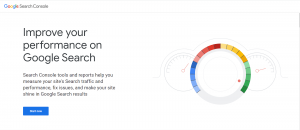“Thought leaders are the informed opinion leaders and the go-to people in their field of expertise. They become the trusted sources who move and inspire people with innovative ideas; turn ideas into reality and know and show how to replicate their success. Over time, they create a dedicated group of friends, fans and followers to help them replicate and scale their ideas into sustainable change not just in one company but in an industry, niche or across an entire ecosystem.” – definition by thoughtleadershiplab.com
In my previous post, “Are you ready for a post-pandemic narrative?“, I made a plea to stop whining about COVID-19 related challenges and start seizing new opportunities. Which is extremely relevant for corporate communicators, content marketers, and thought leaders.
In a September 2021 survey by Edelman and LinkedIn, 3600 global business decision makers and C-suite executives across a wide range of industries and company sizes were asked about the impact of thought leadership, how it influences their perception and buying behaviors, and what attributes B2B audiences want to see from companies.
Over the past 18 months, we’ve seen a global cancellation of corporate events and conferences. With the absence of physical meetings and face-to-face networking opportunities, many companies and individuals have turned to delivering their messages using digital means, such as webinars, downloadable white papers, email blasts, and LinkedIn posts.

Photo by Kotivalo (CC BY-SA 4.0)
As a result, the pandemic has resulted in an excessive quantity of (often) lower quality content and, more recently, also a growing fatigue for virtual events. According to the report, almost 4 in 10 decision makers said there is more thought leadership content than they can manage or that the market is oversaturated with such material. This flood of digital content has also diluted its perceived value: 71% of decision makers concluded that less than half of the thought leadership material they consume gives them valuable insights.
On the positive side, more than half of the executives said that they spent more time-consuming thought leadership than before the coronavirus started its global spread – more than an hour per week. They still value quality content because it allows them to understand the trends affecting their industries and helps them generate new ideas for their businesses.
You may remember an article I wrote a few years ago about the sometimes thin line between a thought leader and an entertainer, in which I listed a few dos and don’ts for aspiring thought leaders. Some of these were confirmed by the respondents of the Edelman survey. When asked about the predominant shortcomings of low-quality thought leadership,
- 46% answered being “overly focused on selling or describing products rather than conveying valuable information”,
- 40% of them get bummed by “unoriginal thinking, or a lack of new ideas”, and
- 31% don’t want content “authored by people who are not true experts on the subject matter”.
Building upon the definition I quoted higher on this page, thought leadership will need to start serving as an engine for change again. That’s why I believe that the 2022 secret code for pundits will include words like purpose, meaning, and engagement. And that true opinion makers will have to demonstrate insight, authority, and trust for being credible to business decision makers.
You may download the report here:
- 2021 B2B Thought Leadership Impact Study (Edelman and LinkedIn)
Business & Finance Articles on Business 2 Community
(17)






